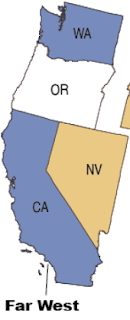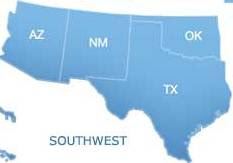As of March 31, 2025, Health Resources and Services Administration (HRSA) data shows that nearly 122.4 million Americans lived in communities or settings designated as mental health care health professional shortage areas (HPSA). This designation reflects a situation where the residents of a population group, geographic area, or facility have poor access to basic mental health services because too few mental health care practitioners serve the area given the size of the HPSA's population. The HRSA estimates that HPSAs throughout the country would need more than 6,200 additional mental health care practitioners in order to rectify the mental health care shortfall in these communities.
Here is a summary look at the U.S. mental health care shortfall by region (for state-level details, follow the "region" link):
The U.S. Mental Health Care Shortfall by Region
| Region | (1) HPSAs | (2) Population | (3) Shortfall |
| Far Western U.S. | 1,358 | 18,603,356 | 994 |
| Great Lakes | 847 | 21,634,379 | 923 |
| Great Plains | 890 | 8,830,228 | 409 |
| Mid-Eastern U.S. | 426 | 6,883,074 | 453 |
| New England | 201 | 1,812,356 | 90 |
| Rocky Mountain | 326 | 7,724,602 | 287 |
| Southeast | 1,458 | 36,452,825 | 1,987 |
| Southwest | 813 | 18,742,731 | 937 |
| U.S. Territories | 99 | 1,700,437 | 122 |
| U.S. | 6,418 | 122,383,988 | 6,202 |







